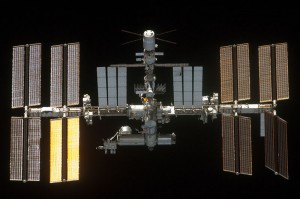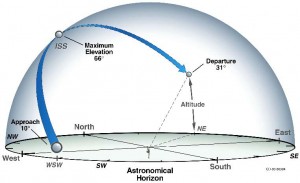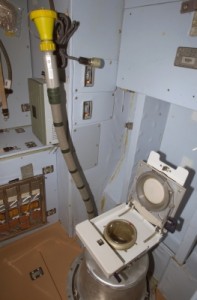 A clear night sky in the wilderness offers spectacular views of celestial objects, including the International Space Station (ISS). After all, the dang thing weighs 954,334.8 pounds and covers an area of 26,909.78 square feet. I mean you’d have to be practically blind not to see it.
A clear night sky in the wilderness offers spectacular views of celestial objects, including the International Space Station (ISS). After all, the dang thing weighs 954,334.8 pounds and covers an area of 26,909.78 square feet. I mean you’d have to be practically blind not to see it.
According to the NASA ISS facts and figures page:
The ISS solar array surface area could cover the U.S. Senate Chamber three times over.
Frankly I think they should use some of the extra to cover the House of Representatives. Both houses could benefit from some heat, but I digress.
When observed from Earth, the ISS is one of the brightest objects in the sky, with an apparent magnitude of -5.9. It appears as a bright white dot, moving quickly across the night sky. So why then do so few of us actually see it?
Okay, yes it is 240 miles in the air. But don’t forget, 240 miles is the same distance Gandhi went for salt. I have no idea how far he went for pepper, but the point is 240 miles can’t be that far. The real problem is not the distance up, but rather that the satellite keeps moving. Not only does it move, but it does so at a rate of 17,500 miles per hour, or 292 miles per minute. At that speed, when asked to pass the salt, Gandhi could have said give me a minute, and actually meant it.
So how then do we see this really cool moving object?
We just need to know when and where to look. Circling the earth every 92 minutes, we get quite a few chances. It is possible, though unlikely, to see it during daylight. Our best chances are when the sun is reflecting off it brightly and the sky is dark, usually just after dusk or slightly before dawn. But frankly, we can’t stand out here all night, and we are probably looking in the wrong direction.
 On a two week trip to Yosemite, Scott, a backpacking companion, was carrying a small piece of paper with magical insights: a list of dates, times, durations, maximum elevations, directions of entry, and directions of exit. Every night, when the sky and horizon allowed, we gathered and awaited the space stations appearance. If there had not been prohibitions against erecting structures in the wilderness, we would probably have constructed nightly mini Stonehenges in anticipation. It was just that cool.
On a two week trip to Yosemite, Scott, a backpacking companion, was carrying a small piece of paper with magical insights: a list of dates, times, durations, maximum elevations, directions of entry, and directions of exit. Every night, when the sky and horizon allowed, we gathered and awaited the space stations appearance. If there had not been prohibitions against erecting structures in the wilderness, we would probably have constructed nightly mini Stonehenges in anticipation. It was just that cool.
Assuming you don’t have Scott on your wilderness adventures, you are going to have to create your own magical paper. Luckily, NASA has created a website to help you do just that.
https://spotthestation.nasa.gov/sightings/index.cfm
Here you will find factual information about the International Space Station and a wide variety of other observable satellites. There is even a cool “applet” that will allow you to enter various criteria, including your location on the planet, and with the push of a button create your own list of observation opportunities.
 The site offers these viewing tips:
The site offers these viewing tips:
For best results, observers should look in the direction and at the elevation shown in the appearing column at the time listed. Because of the speed of the orbiting vehicles, telescopes are not practical. However, a good pair of field binoculars may reveal some detail of the structural shape of the spacecraft.
You may, however, want to limit the power of your binoculars. After all, as you can see from the picture, some celestial movements are best unseen.

Your mother-in-law is in a class I teach for the adult school and sent me a link to your site. Another excellent site for satellite viewing is: heavens-above.com
I have managed to use a telescope to photograph the ISS, quite a challenge, but possible.
Ralph, Thanks for the link; it seems like another great astronomy resource. Also, thanks for checking out HowToWilderness. – rick